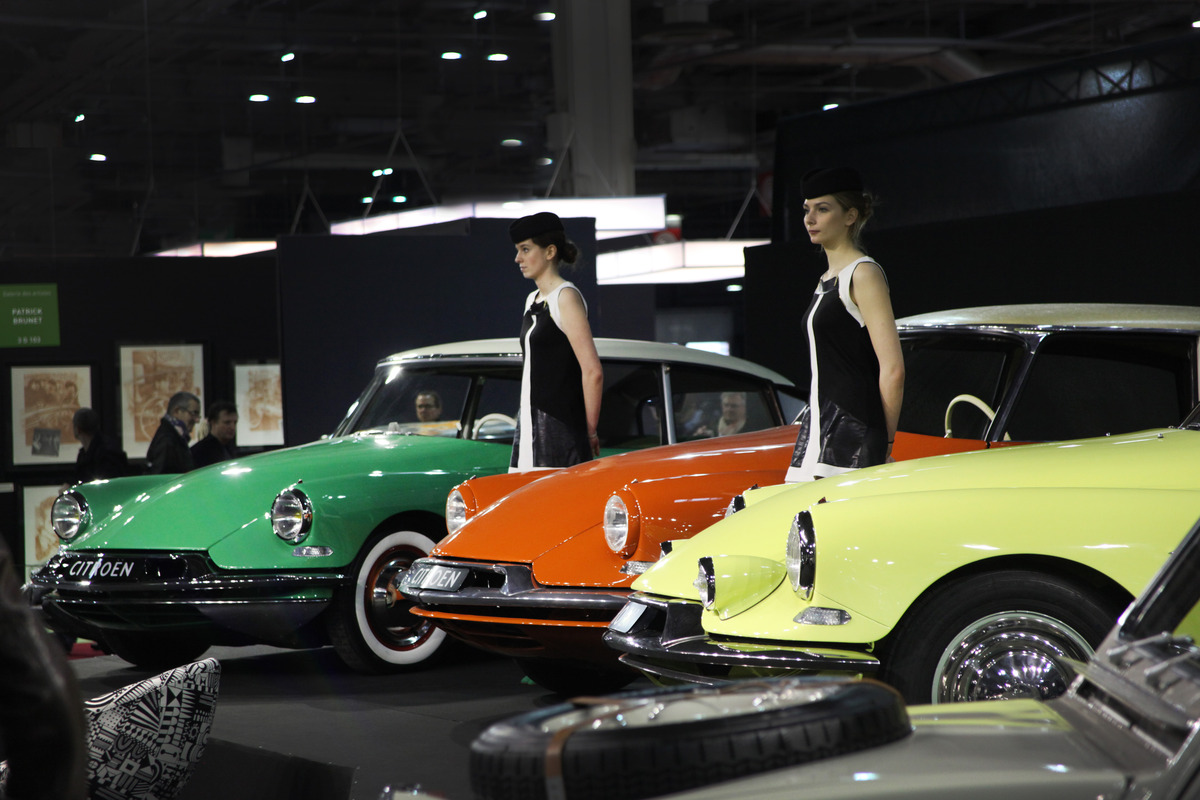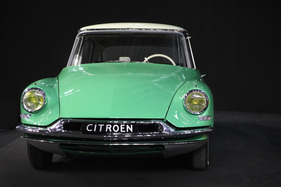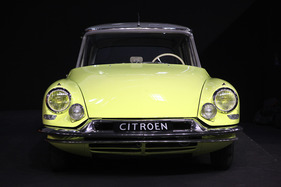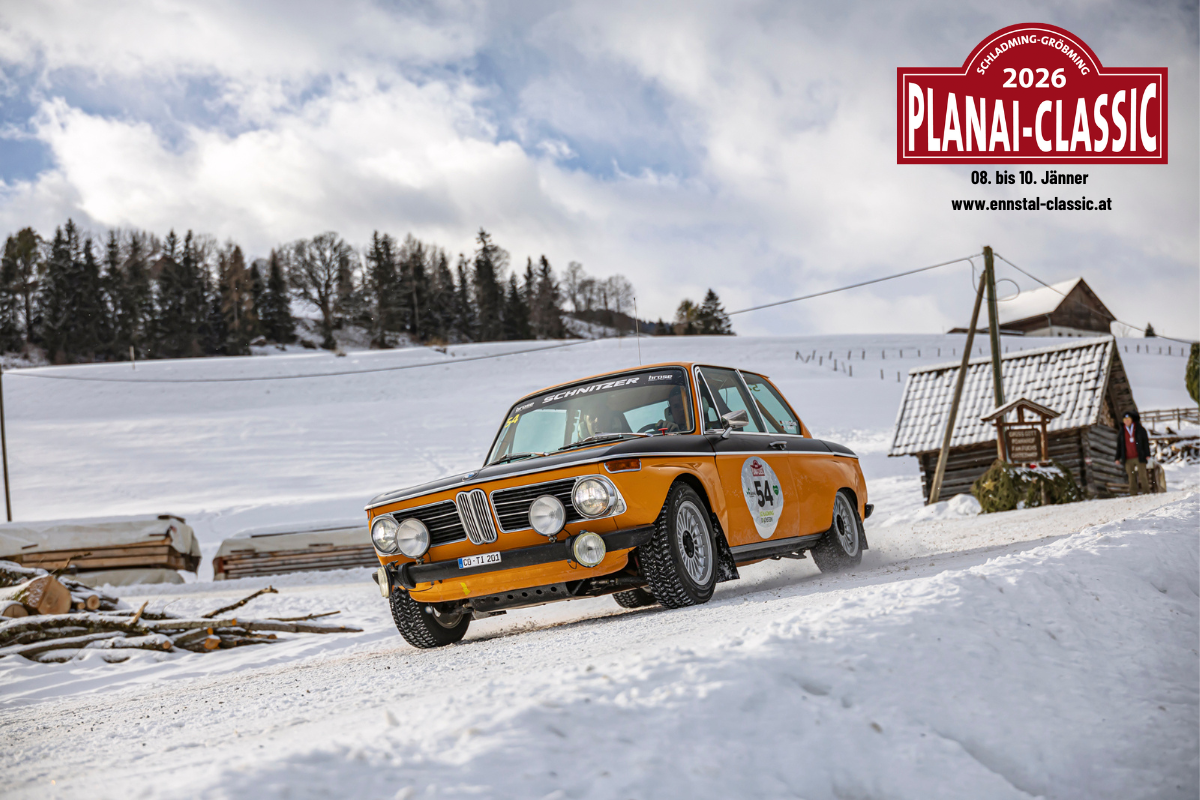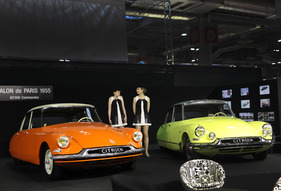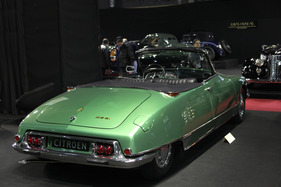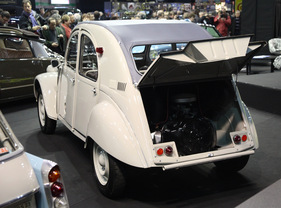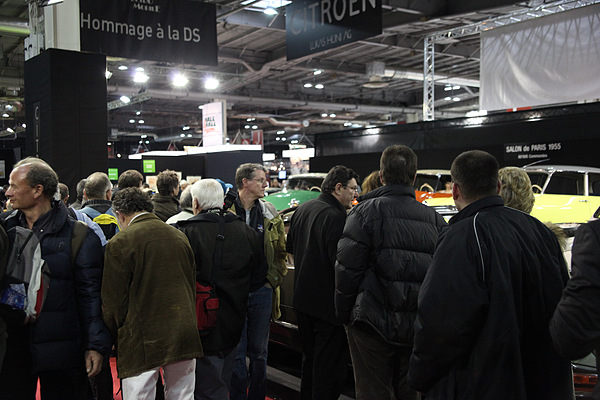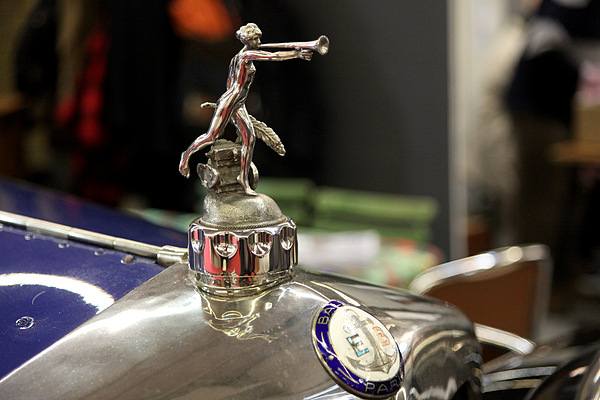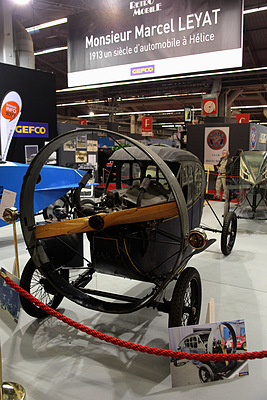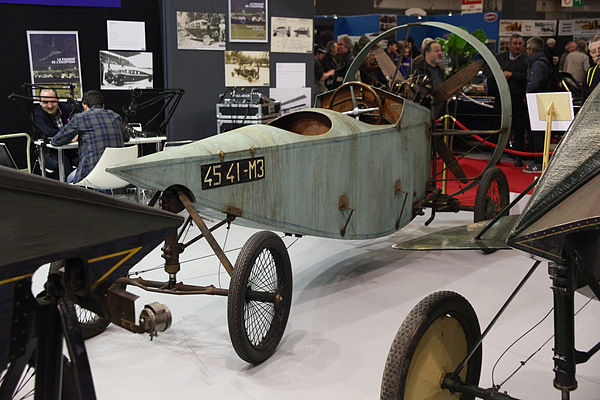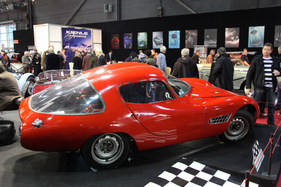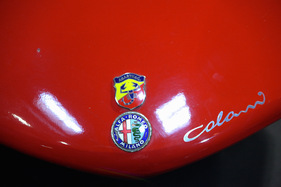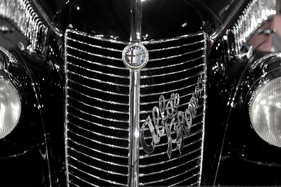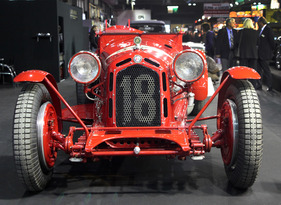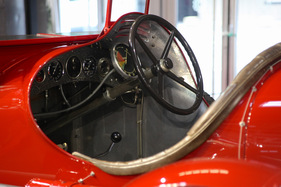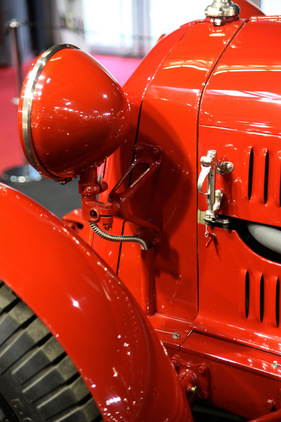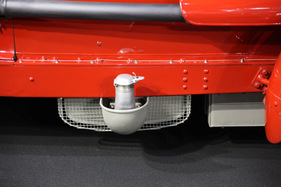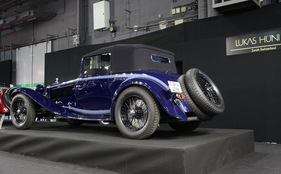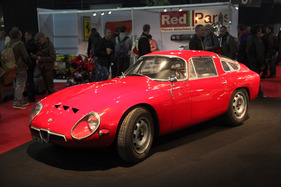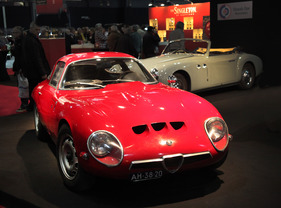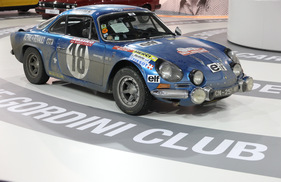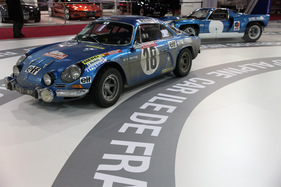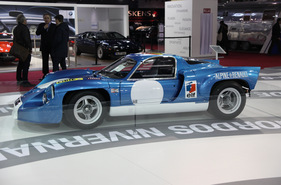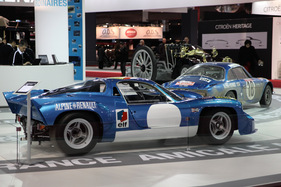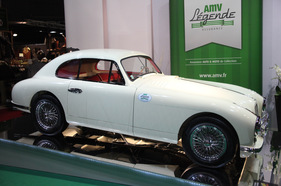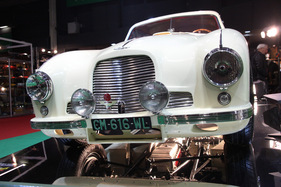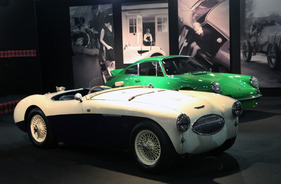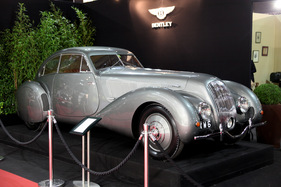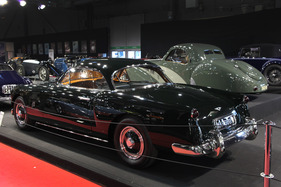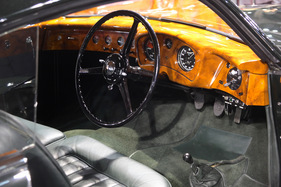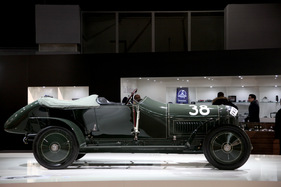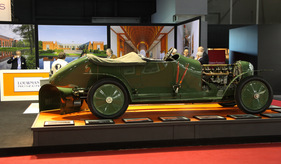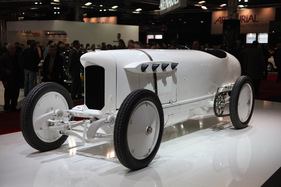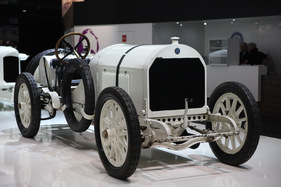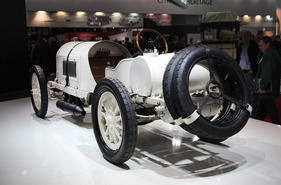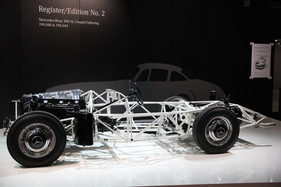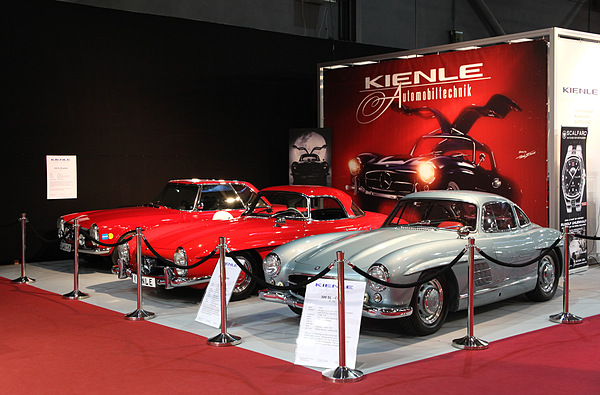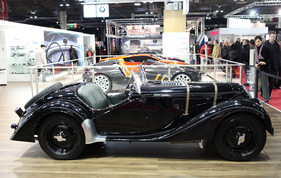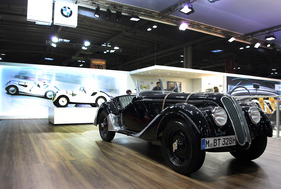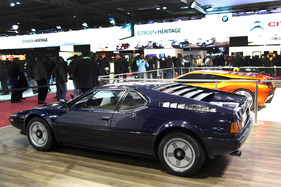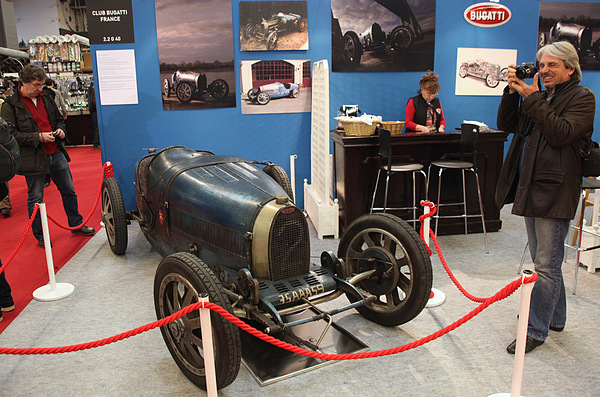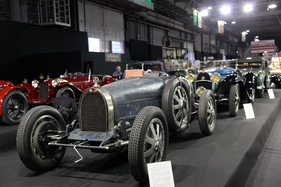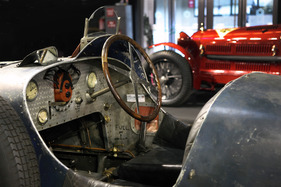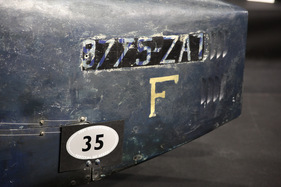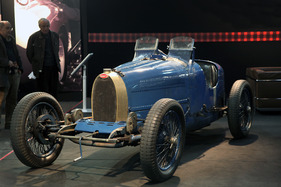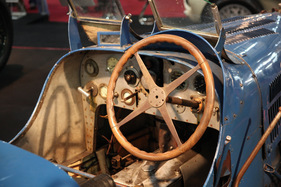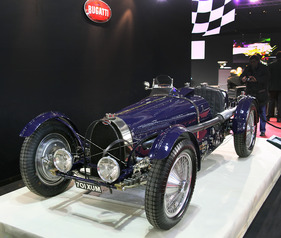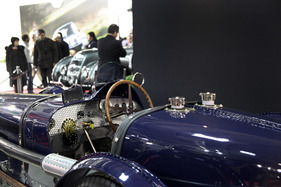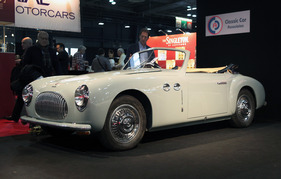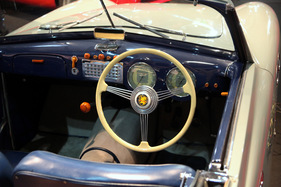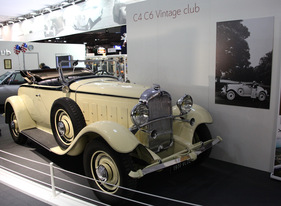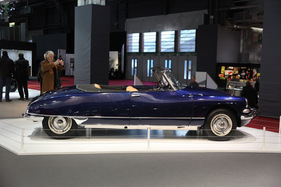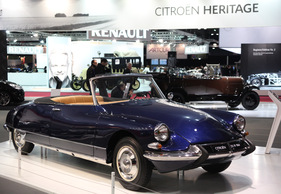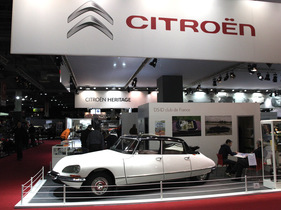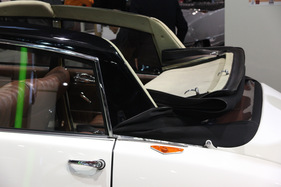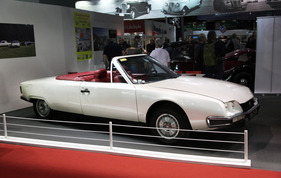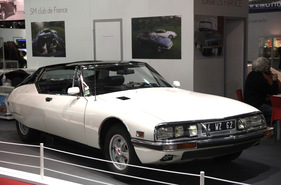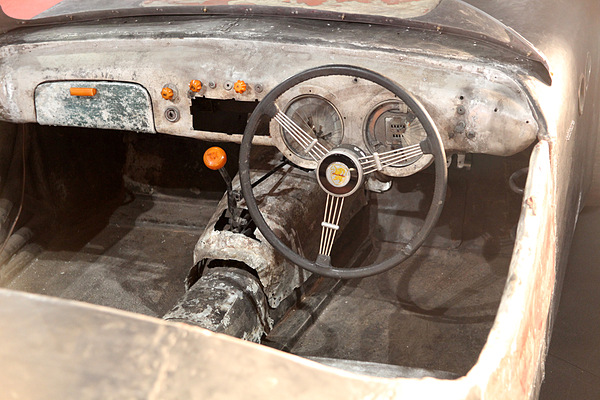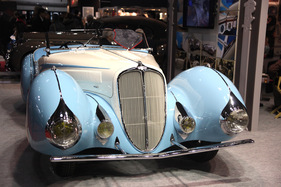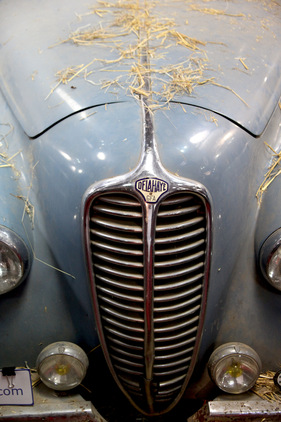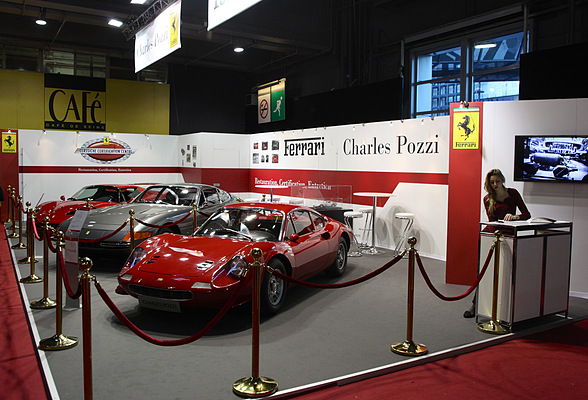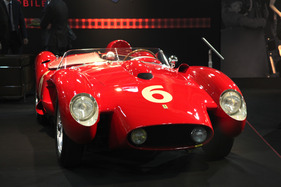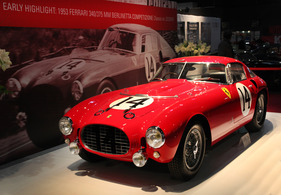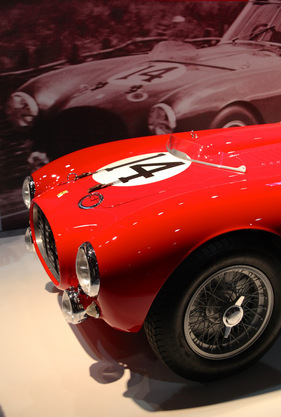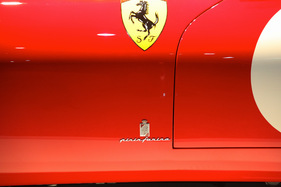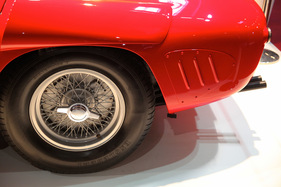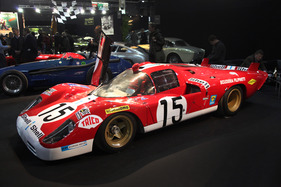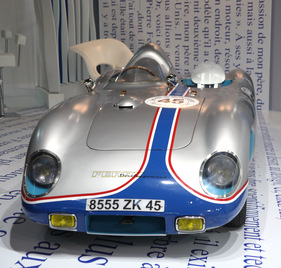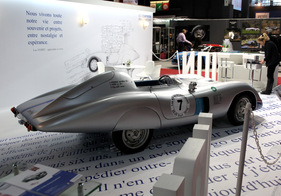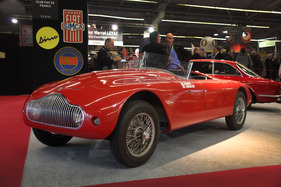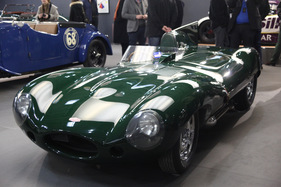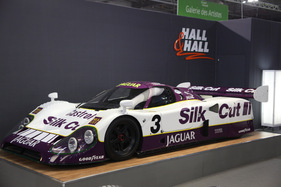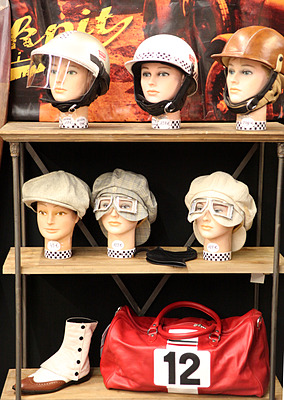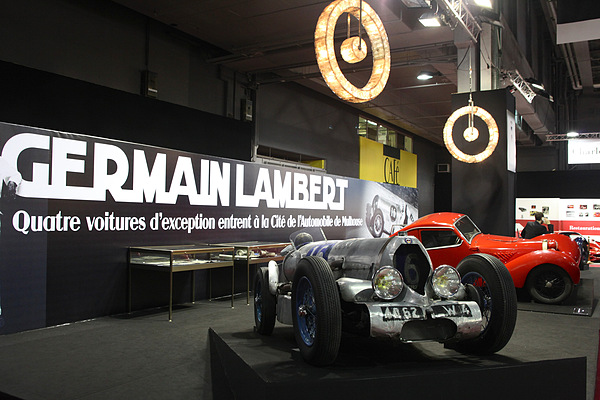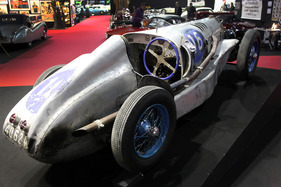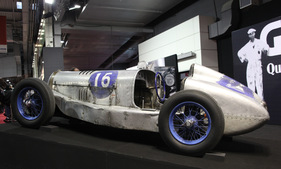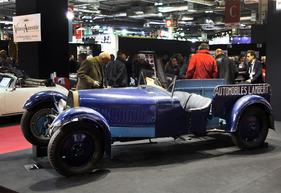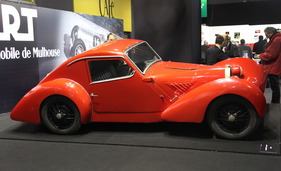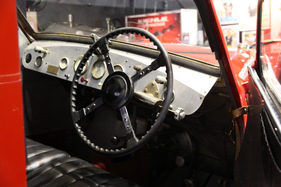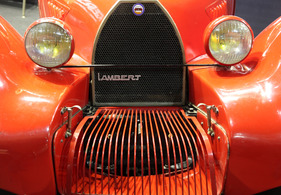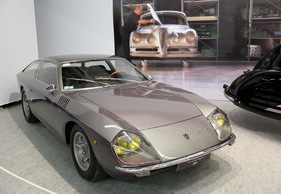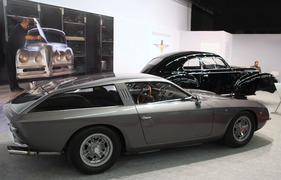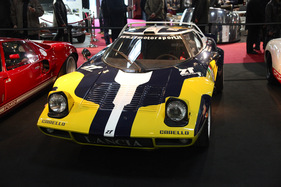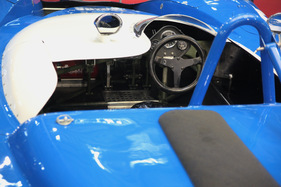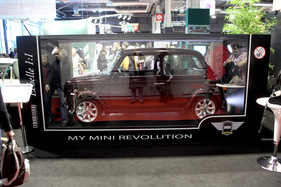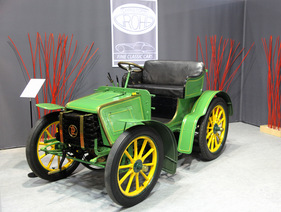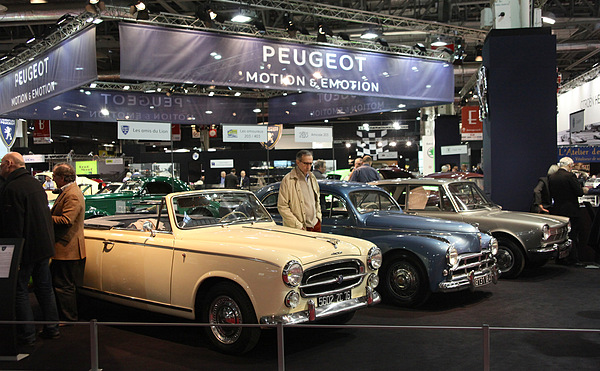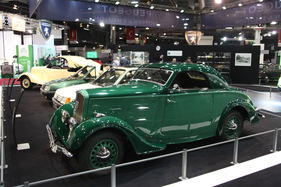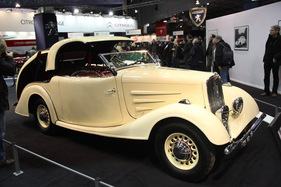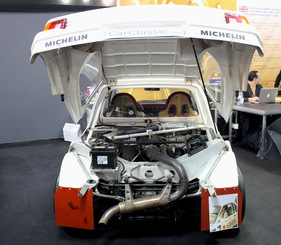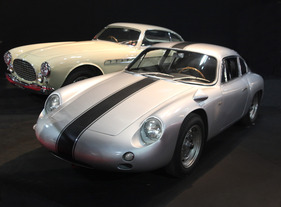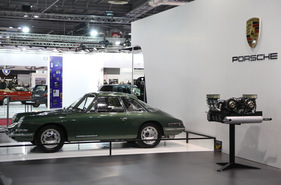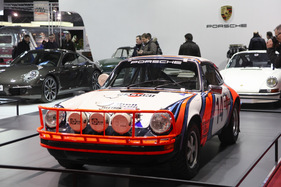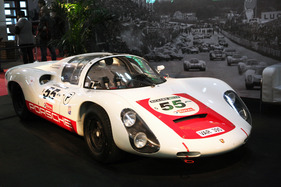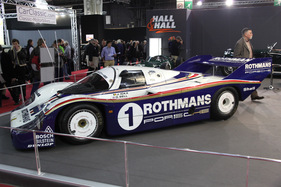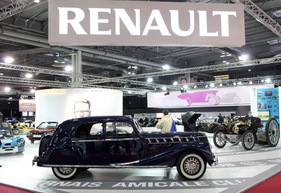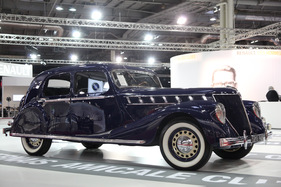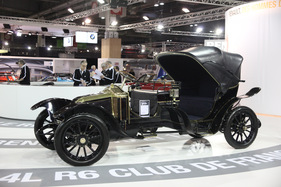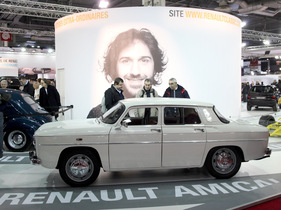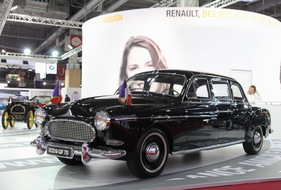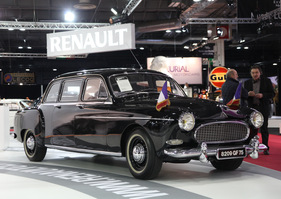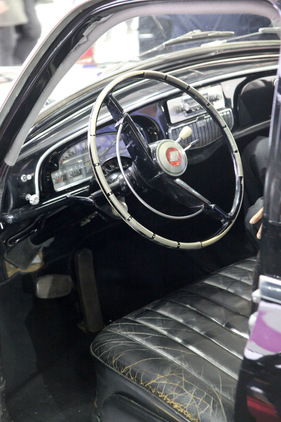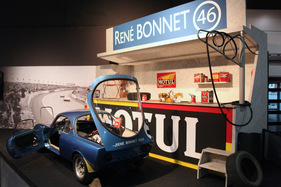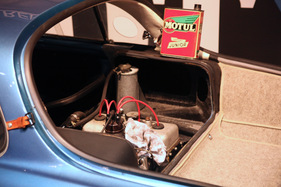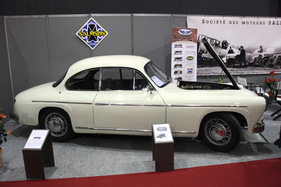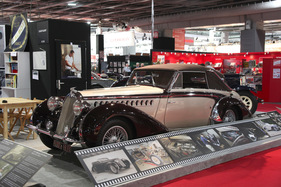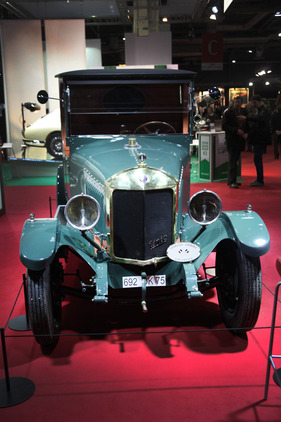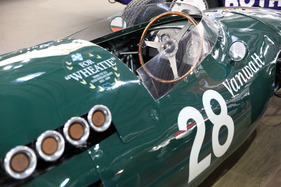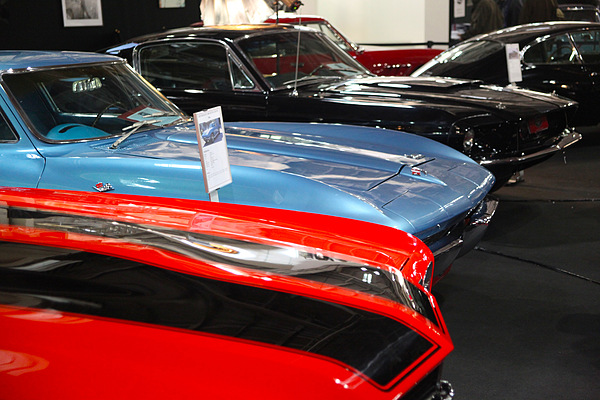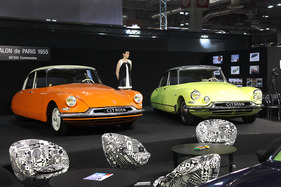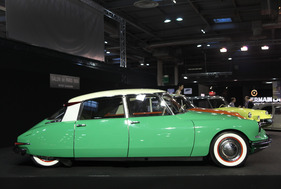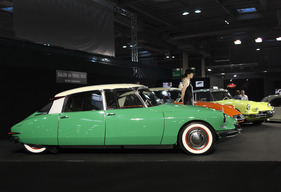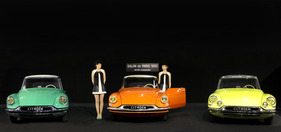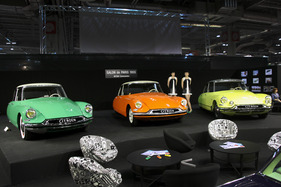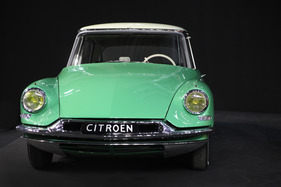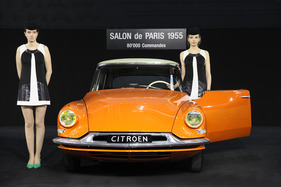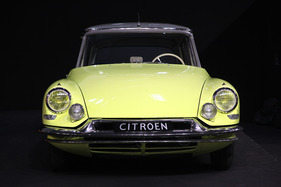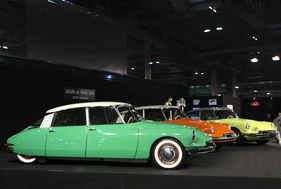Paris is always worth a visit. As soon as you arrive, you immediately adapt your rhythm of life to this big city. You become a little more relaxed, overlook the often mediocre coffee and enjoy the waiters, who still serve you with a traditional waistcoat and tie. You enjoy the comfort of a highly efficient metro and take pleasure in the poster-paved corridors in the catacombs of Paris, only to soon return to the surface, perhaps catch a glimpse of the Eiffel Tower and visit the nearest street café where locals and tourists alike sit outside, even in winter.
Crowds of people
But of course we hadn't come to enjoy the delights of the Seine city. Because it was Rétromobile time, as always at the beginning of February. It was opening its doors for the 38th time and people were streaming in. And how they flocked, 80,000 of them. Queues of 200 meters in front of the entrance doors were the norm and just an hour after the doors opened, many a passageway was already jammed and one or two of the400 exhibitor stands could no longer be seen because of all the people. Every year there seem to be even more people who want to travel back in time at the Rétromobile. Which is particularly successful in Paris, because hardly any other trade fair offers such high-caliber exhibits concentrated in such a small space.
Long live the Citroën DS
In 1955, Citroën presented the Citroën DS (the goddess) at the Paris Motor Show; 80,000 orders were recorded during the show. The crowds threatened to suffocate the stand. It wasn't quite as bad at "Hommage à la DS Citroën", which Lukas Hüni had organized with vehicles from his own collection in collaboration with Rétromobile on a specially reserved stand.
But here, too, the crowds were jam-packed and some people started dreaming about the skillfully staged cars. Three DS-19 models in green, orange and yellow stood there like at the 1955 Paris Motor Show. Even the two hostesses who stood between the limousines wore dresses "modeled" on those of the time.
But the stand also contained other treats, such as a twin-engined 2 CV with four-wheel drive and two rare DS special bodies from Chapron, as well as a factory convertible.
A reunion with Lambert
Very few people are still familiar with the name Germain Lambert, and hardly anyone has ever seen his cars. Now four of them have been reunited and exhibited together for the first time to commemorate the bold car artist from France. This was made possible by the Motul company, which will pass the vehicles on to the Automobile Museum in Mulhouse after the Rétromobile.
Germain Lambert (1903-1983) was an artist and a very special car designer. He gave his autobiography the title "Autocritique Auto". He was obsessed with the idea of independent suspension and his cars had to be light, fast, compact, comfortable and economical. Luxury was only available to him in the form of more engine capacity; anything else would have been detrimental to his other objectives.
He built his first car at the age of 24 and designed it with front-wheel drive and independent suspension, which is why the model was called "Sans Choc". During the war, he built electric vehicles, followed later by a Coupé 6 CV with an already self-supporting body and semi-hydraulic suspension. In 1949, he developed a thoroughbred aluminum racing car called the "Biplace Course", with which he won his category at the Bol d'Or (then still for automobiles). He repeated this victory a few years later with the road-going Cabriolet CS. In total, Lambert is unlikely to have built more than 30 cars, all of which were equipped with Ruby engines.
Rarities at Lukas Hüni
If you were on the hunt for rarities at the Rétromobile, you couldn't miss Lukas Hüni's stand. When else do you get to see a Bentley Mark VI bodied by Facel? The beautiful vehicle, which is reminiscent of the later Facel Vega in its contours and details, was provided from a private collection. Lukas Hüni does not aim for a sales exhibition in Paris, but rather a performance show, and only two of the twelve cars on his stand were "for sale".
The Bugatti Type 35C, which Trintignant once drove and which also competed at Klausen, among other events, was also not for sale and looked as if it had just returned from there, battered and with battle scars.
Fast and rare with the specialists
Every year, the range on offer from the numerous major dealers - Hall & Hall, Fiskens, Les Galeries de Darmiers, Christian Grohe or Marreyt Classics - is surprising. The only rear-engined Vanwall monoposto was on display, the Jaguar XJR 12, which won Le Mans in 1990 and had emerged victorious two years earlier as the XJR 9 at the 24 Hours of Daytona.
RM Auctions gave a foretaste of the upcoming Villa d'Este auction and showed a Ferrari 340/375 MM Berlinetta Competizione from 1953 in immaculate condition, a true sculpture designed by master Pininfarina.
A stand on which Motul had draped a René Bonnet 1000 as it once was at Le Mans in 1962 was also inspiring.
Retrospective of the Hélica propeller cars
One announced attraction was an exhibition of several propeller-driven vehicles built by Marcel Leyat in the 1920s.
In 1927, a Hélica, as the vehicles were called, reached a top speed of 171 km/h in Monthléry. The philosopher and inventor Leyat is said to have built and sold over 20 of these vehicles, which is not surprising, as they were comparatively simple, inexpensive to run and offered space for two passengers.
Revived Lamborghini Flying Star II
Not only is it called "Star", it was also one of the stars at the Rétromobile, the Lamborghini Flying Star II from 1966. Presented at the Turin Motor Show at the time, it marked the end of the Carrozzeria Touring Superleggera, which was only reborn in 2008. The Flying Star II was a two-volume sports car based on a Lamborghini chassis 350 GT, powered by the 4-liter aluminum V12 of the 400 GT, hence the name "Lamborghini 4000 GT Flying Star II". The silver-colored sports station wagon was purchased by Jacques Quoirez, the brother of Françoise Sagan.
In 2009, it was restored to its original condition by the Touring Superleggera restoration workshop and was now rightly allowed to be shown as a flagship at the Rétromobile.
Tradition-conscious Mercedes-Benz
Mercedes-Benz was able to offer a world premiere together with the Louwman Museum. Two "Prinz Heinrich" Benz models from 1910 stood nose to nose, both recently rediscovered in the museum's own collections and now restored. Of course, a 300 SL was also on display, this time as a "naked" body shell with engine. However, two other pre-war racing Benzes, including the famous Blitzen-Benz, were also attractions.
The Louwman Museum had also brought the four-wheel drive Spyker from 1903 to Paris.
Skoda in racing fever
Skoda 's presence was entirely focused on racing cars. A Formula 3 racing car from 1964, a Type 728 sports car from 1972 and a Type 130 RS rally car stood side by side on a glistening white stand, pointing to Skoda's sporting past when Volkswagen was not yet in charge.
Openness at Citroën
The large Citroën stand (together with the associated clubs) was entirely dedicated to convertibles, with no fewer than 17 such cars on display, including a C6 Cabriolet, a B12 Torpédo and a Xanthia concept car from 1986.
BMW contrasts the present and the past
BMW juxtaposed concept cars of the present with their predecessors with classic status, one BMW 328 and one BMW M1. However, the typical visitor is likely to have been more impressed by the "originals" than by the modernist successors.
Peugeot celebrates 30 years of the 205
There was also plenty to see at Peugeot, not least the 30th anniversary of the 205 model. Of course, other classics were not to be missed, especially the Eclipse, which was on show in two versions.
The Renault Twingo is 20 years old
Diversity was the order of the day at Renault. In addition to a statesmanlike Frégate limousine, there was an impressive Nerva Grand Sport from 1937 on display. And, of course, the Alpine was not to be missed, this time in the form of an A110 1600S from 1971 and an A220 from 1968.
Back to the beginnings - 50 years of the Porsche 911
To mark the current occasion - 50 years of the Porsche 911 - this model naturally took center stage at Zuffenhausen. The T7 prototype from 1959 had been specially transported from the factory museum to Paris, but the 911 SC Safari and a 935 from 1977 were also loaded up at the same time. The current model was almost unnoticeable.
Club stands with trouvailles
The club stands are always a talking point every year. The Delahaye Club was able to secure the 100-point-restored Delahaye Type 135 M Roadster, bodied by Figoni&Falaschi in 1937, as an attraction, while the Citroën Clubs displayed a CX Orphée Cabriolet from 1983 and an SM Espace with an open roof, among other things.
A rarity in itself was the 1954 Salmson 2300 S , which had taken no fewer than 55 first places in various racing events between 1954 and 1957 and took part in both the Mille Miglia and the 24 Hours of Le Mans in 1955. The body was built by Master Chapron, the engine had a displacement of 2.3 liters and produced 110 hp, enabling the sporty GT to reach speeds of 180 km/h.
80 years of the Bugatti 59
The Bugatti Type 59 celebrated its premiere in 1933. Although it is not one of the most powerful models built by Ettore Bugatti with many major victories, it is certainly one of the most beautiful Grand Prix cars of all time. Only five (or six?) examples were built. One of them was on display at the Rétromobile in very good condition.
Rummage boxes and booksellers
Of course, as always, classic car fans looking for parts were also catered for, even if this section was significantly smaller than at other trade fairs abroad. On the other hand, bookworms were able to purchase material for several winters at several stands. It is always fascinating to see how many books are still being written on the most outlandish topics. Thank goodness enthusiasm often takes precedence over commercial considerations.
And then there was
As in previous years, the two auction houses Artcurial and Bonhams took the opportunity to invite classic car fans to their auctions. Artcurial also showcased its entire range in Pavilion 3, which was the only place where a Bugatti E110 or a Duesenberg Model J could be viewed.
So for many a classic car enthusiast, a long weekend passed without ever getting to see the other attractions of the city of Paris. But then there is spring, when Paris is even more beautiful than in winter.
